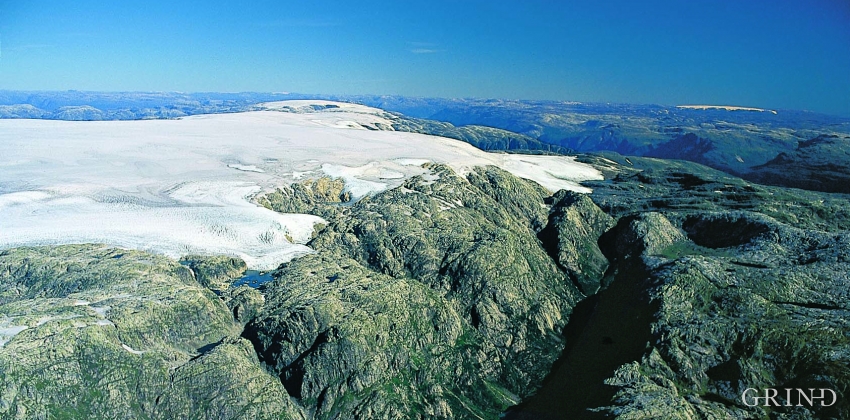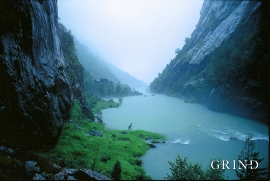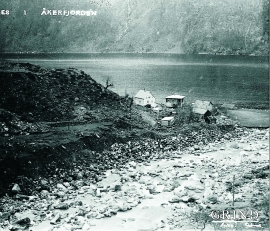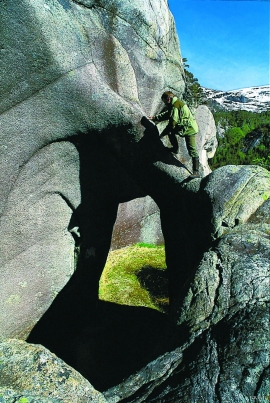Published: 18.06.2015 | Author: Arve Tvede
Foglefonna and Sandvikedalen with Hardangerjøkulen in the distance. Rapid drainage of the water from the glacial dam along Foglefonna has been cause of major flooding in the Mosne River. (Jan Rabben)
WHEN THE WATER GETS OUT OF CONTROL
The permanently-protected Mosneselva River, with its meltwater from Folgefonna, runs out into Åkra Fjord by the roadless and uninhabited Mosnes. Those who once lived here were forced to surrender to the ravages of Nature. In the autumn of 1962 there was a flood so great that the people were driven from their farms.
The floodwaters came from a glacier-dammed lake. When Folgefonna retreated throughout the 1930s, a lake formed between Sauanuten in Odda and the edge of the glacier. From the 1930s until 1962, this water caused several episodes of flooding, all of them following strong rains, and these floods resulted in a rapid decrease in water levels. On the 18th of October, 1962, two students observed an outflow that would come to have great consequences. During the night these two witnessed that the water level dropped a whole 30 metres. Even though there had been big floods both in 1938 and 1944, it was this flood that was the last straw for the people of Mosnes. In a short span of time the town was evacuated.
But, the unruly Mosnes river didn't settle down yet. Some of the water in the uppermost part of the river system was transferred in 1970through a tunnel to the Blådals river system and Blåfalli power station in Kvinnherad. When the glacier advanced in the 1990s, the tunnel water became blocked by ice. Eventually, in 1994, the water escaped and ran down its original channels. A new tunnel was built in the autumn of 1995 to contain this rampant water.
Isolated for months
It is not only Mosnes that has experienced what can happen when Mother Nature goes amok. Before the stretch of road between Fjæra and Håland was improved with 9 kilometres of tunnel in the year 2000, the fjord ice provided about the only avalanche-protected way along Åkra Fjord in winter. Other times of year the ice was of little help. Those who lived in the neighbourhoods Eikemo and Tysse on the North side of the fjord, where road connections are lacking, were more or less isolated for two months, as late as the winter of 1995-96, because the ice was not safe to cross. It is the inner part of Åkra Fjord that freezes first. The ice formation is partly due to the fact that several large rivers drain here. This also gives cold air that comes down the valley. When there is ice on the snow, the temperature in Fjære can be much lower than in Eikemo, even though the latter lies at 178 metres above sea level.
In order to get to the valleys of Mosdalen and Sandvikedalen you have to arrange boat transport to Eikemo or Mosnes, or come in from Rullestad through Hjortedalen valley. (Svein Nord)






